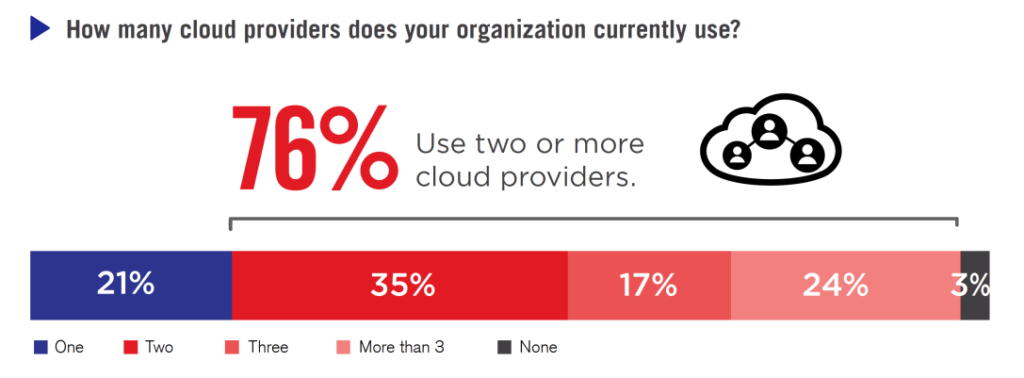
By: Fortinet
Cloud Security 2021: Latest Trends and Insights by Fortinet, With cloud continuing to be a hot topic in 2021. Fortinet and Cybersecurity Insiders decided to ask cybersecurity professionals around the world and across all industries for their latest insight.
The brand new 2021 Cloud Security Report reveals how more than 500 cybersecurity professionals —from technical executives to managers and IT security practitioners — are responding to security threats in the cloud, how their organizations are using cloud, and the best practices they are prioritizing. Let’s take a look at some of the key findings.
First, and perhaps not surprisingly, organizations continue to rapidly adopt cloudto meet key business objectives. And that trend doesn’t seem to be slowing down any time soon.The reportindicates that 33% of organizations are running more than half of their workloads in the cloud today, and that number is set to rise to56% in the next 12–18 months.
And multi-cloud, whether as a chosen strategy or simply where organizations end up, is very much the norm. A whopping 76% of organizations are using two or more cloud providers.That doesn’t mean that on-premises has gone away – hybrid still accounts for more than one-third of deployments. What it does mean is thatorganizations are now operating in an expanded and diverse digital landscape.

Given the similarly expanding digital threat landscape, it’s perhaps not surprising that security remains aconcern. Virtually all respondents indicated that they were at least moderately concerned about the security of public clouds, nearly one-third being extremely so.That said, it’s not threat actors that top the list of cloud security threats, misconfiguration wins that vote. The complexity of managing multi-cloud environments isclearly adding to what is already a challenging task.
Security teams are searching for ways to make this task simpler. They’relooking for solutions that reduce this complexity, are easy to use, and are well integrated. The majoritykeen to have a single cloud security platform, with a single dashboard,where they can configure all of the policies needed to protect data consistently and comprehensively across a diverse cloud footprint.
At the same time, cybersecurity professionals are operating under tight budget constraints, with cost being the primary criteria for deciding which security solution to implement. It seems some organizations may still not have grasped that, in order to achieve the business goals that they are looking to realize with cloud, cloud security is a critical enabler.
Addressing the challenges outlined in the 2021 Cloud Security Report clearly demands a strategy that embraces complexity. Organizations are grappling witha diverse set oftools that deliver disparate controls and highly variable security posture, specific to each cloud platform.
The Fortinet Adaptive Cloud Security portfolio offers organizations the ability to bridge this complexity.Deeply integrated, cloud-native solutions provide consistent visibility, protection and control across the diverse array of cloud environments.This common security framework not only delivers uniform security posture, it also simplifies cyber defense, compliance reporting and data sharing. Teams are free to adopt whichever cloud platform suits their particular needs, confident that their data and applications will be safe, resilient and securely accessible in each.
Cloud is now a critical part of the digital landscape for most organizations, and often a key enabler for future success. Aligning security strategy and business strategy is key to ensuring that this future is one you can always trust.
